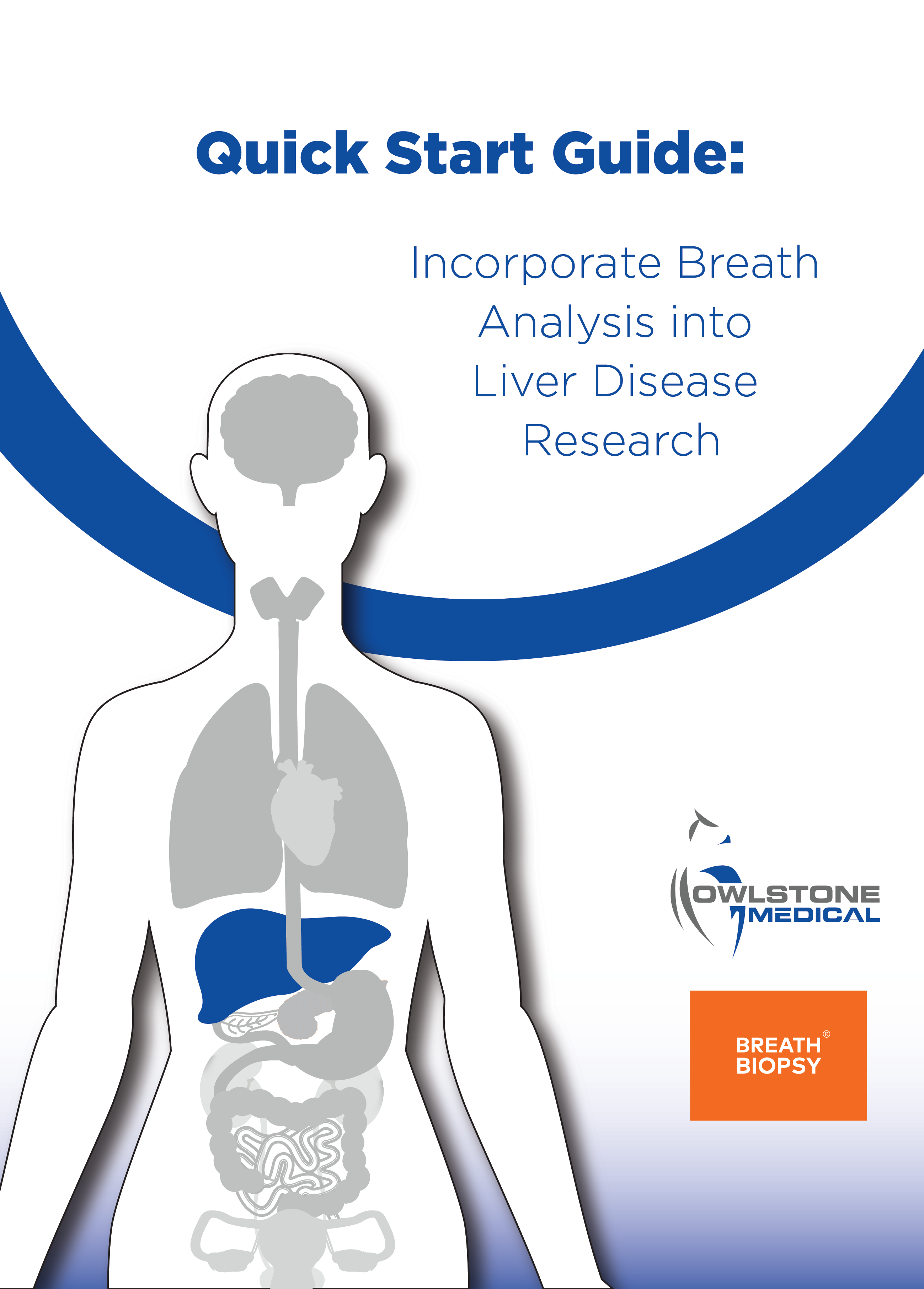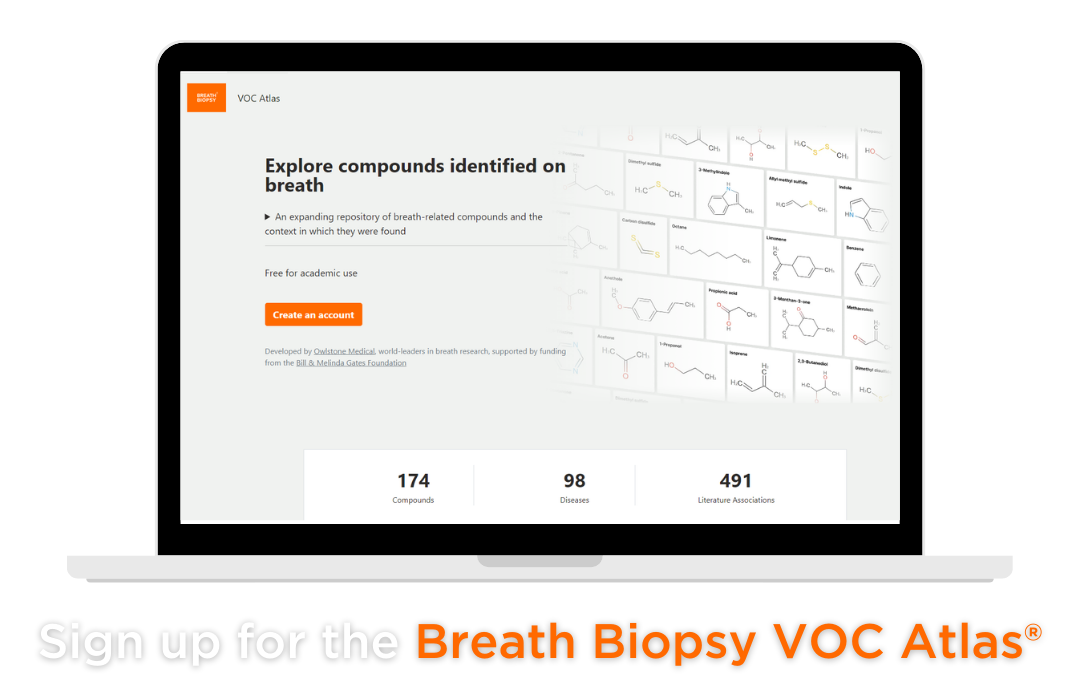Quick Start Guide: Incorporate Breath Analysis into Liver Disease Research
Read our short document summarizing the potential of breath analysis in liver disease research, what data we have, and how Owlstone Medical can help.
Breath analysis is emerging as a revolutionary tool in liver disease research, offering a non-invasive, rapid, and cost-effective approach to diagnosing and monitoring diseases. Advances in technology and analytical techniques mean we can detect volatile organic compounds (VOCs) in exhaled breath that are associated with various liver diseases, including non-alcoholic steatohepatitis (NASH) or metabolic dysfunction-associated steatohepatitis (MASH), non-alcoholic fatty liver disease (NAFLD) or metabolic dysfunction-associated steatotic liver disease (MASLD), and cirrhosis. Our Quick Start Guide: Incorporate Breath Analysis into Liver Disease Research provides details on how to implement breath analysis into research pipelines for these diseases.
Our Quick Start Guide is a free short document packed with insights into the expanding applications of breath analysis in liver disease research, including our Breath Biopsy® technology. This guide is perfect for researchers looking to begin using breath analysis in their studies, as well as researchers who are already using breath analysis and are interested in incorporating this method into liver research.
What can you expect to find in our Quick Start Guide: Incorporate Breath Analysis into Liver Disease Research?
The key features of our guide include:
- Details on why breath is a powerful sampling matrix for liver diseases.
- Data that is currently available in the literature and our internal work illustrating biomarker detection through breath analysis for liver diseases.
- How our Breath Biopsy products and services can be used to identify and quantify VOC biomarkers in exhaled breath as well as headspace analysis in vitro.

Our guide discusses many different infectious diseases, including NAFLD, also known as fatty liver disease. NAFLD is one of the most common liver diseases globally, affecting millions of people, especially those with type 2 diabetes and obesity. NAFLD is often asymptomatic, however it can progress to more severe conditions like NASH and cirrhosis if left untreated. Current diagnostic tests rely on procedures such as liver biopsies, which are highly invasive. Breath analysis offers a non-invasive alternative for detecting fatty liver disease early before significant liver damage occurs. This allows for lifestyle changes and medical interventions to help treat NAFLD.
Liver cirrhosis is the advanced stage of liver disease where the liver tissue becomes scarred, and liver function becomes severely impaired. Cirrhosis of the liver is associated with significant metabolic dysfunction, which can be reflected in the VOCs exhaled by the patient. Breath analysis could serve as a monitoring tool for cirrhosis, particularly in assessing disease progression and response to treatments.
At Owlstone Medical, we have developed our exogenous volatile organic compound (EVOC®) approach which we are utilizing for the diagnosis of cirrhosis. These probes are developed to target specific disease-relevant metabolic pathways that can be monitored non-invasively using Breath Biopsy. Using this methodology, we designed the LIBRA® test, a non-invasive breath test that enables healthcare professionals to detect liver cirrhosis earlier, using a compound called limonene as an EVOC probe.
Our Quick Start Guide document is designed to provide you with everything you need to know about how to incorporate breath analysis into liver disease research. Download your free copy now by completing the form below.
If you have any questions or would like to use Breath Biopsy in your liver disease research, please get in touch with our expert team.
